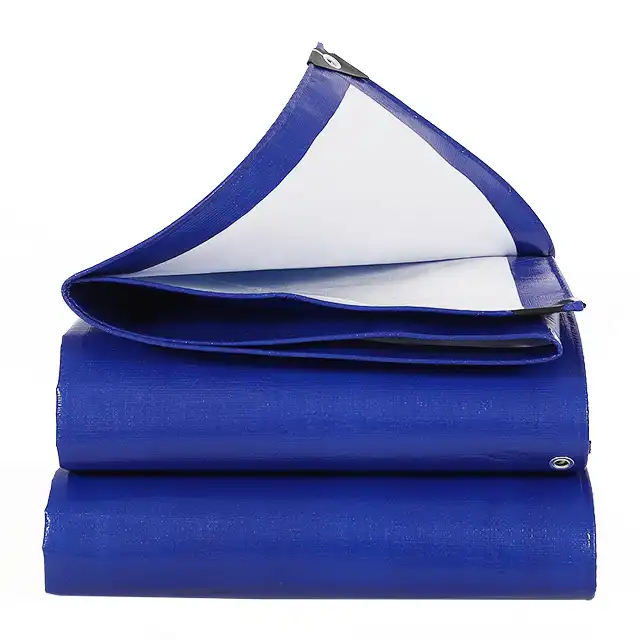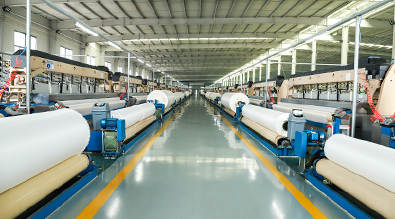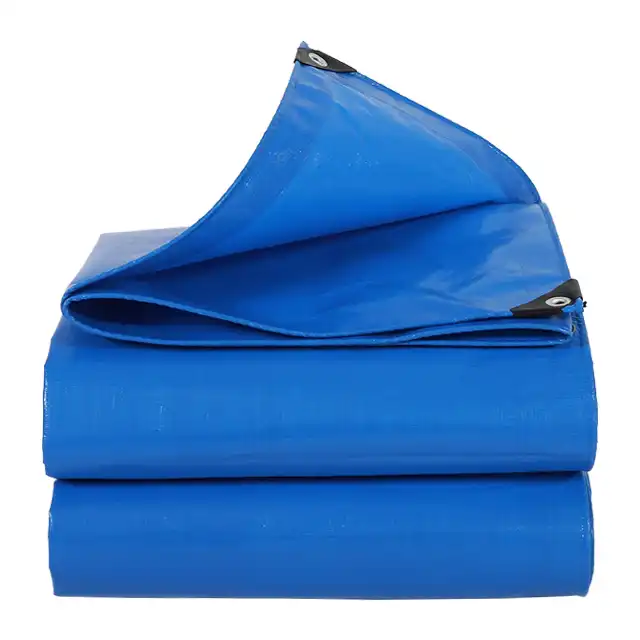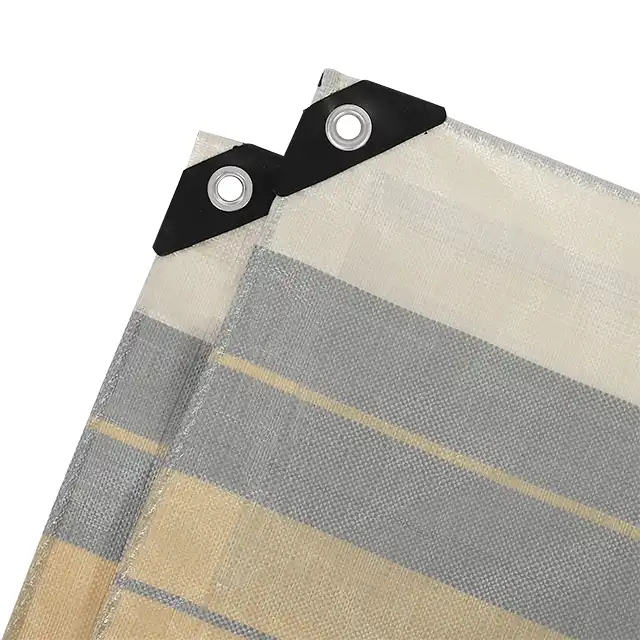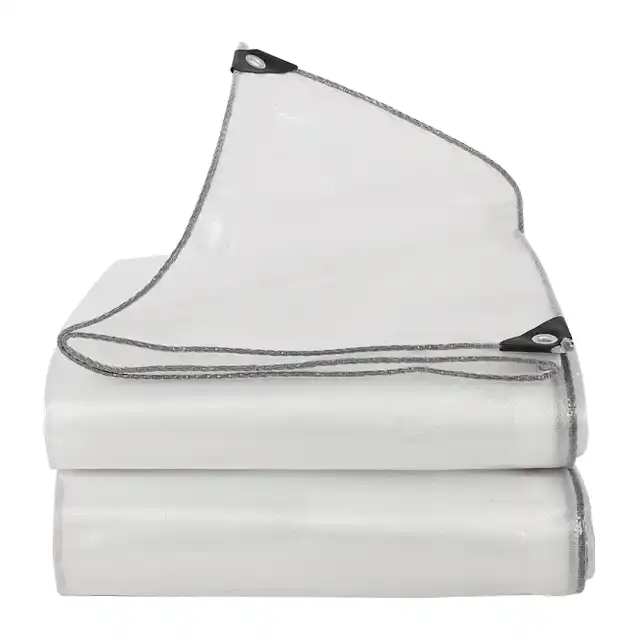Roof Tarps: A Durable Solution for Temporary Roof Damage
When disaster strikes and your roof suffers damage from storms, fallen trees, or other unexpected events, quick action is essential to prevent further deterioration of your property. Roof tarps emerge as an indispensable temporary solution in these critical situations, providing immediate protection while you arrange for permanent repairs. These heavy-duty waterproof coverings shield your home from additional water damage, preventing costly interior issues such as mold growth, damaged insulation, and compromised structural integrity. Made from high-density polyethylene (HDPE) fibers with specialized coating, quality roof tarps like those manufactured by Shengde offer exceptional resistance to tearing, UV radiation, and harsh weather conditions, making them the perfect emergency solution for homeowners and contractors alike.
Understanding Roof Tarp Applications and Benefits
Immediate Protection Against Water Infiltration
 When roof damage occurs, time becomes your greatest enemy as water can quickly penetrate your home, causing extensive damage to ceilings, walls, insulation, and personal belongings. Roof tarps serve as an immediate defensive barrier against these potential disasters. The premium PE tarpaulins manufactured by Linyi Shengde Plastic Co., Ltd feature 100% waterproof construction with weights ranging from 65gsm to 280gsm, providing exceptional protection against heavy rainfall. These roof tarps are fabricated using high-density woven fabric with LDPE coating on both sides, creating an impermeable barrier that prevents any moisture from seeping through. The specialized lamination process ensures complete waterproofing even under sustained exposure to heavy downpours. Unlike makeshift solutions, these professional-grade roof tarps maintain their waterproof integrity over extended periods, giving homeowners crucial peace of mind during the often lengthy repair process. Additionally, the materials resist degradation from standing water, maintaining their protective capabilities even when water pools in certain areas due to roof contours.
When roof damage occurs, time becomes your greatest enemy as water can quickly penetrate your home, causing extensive damage to ceilings, walls, insulation, and personal belongings. Roof tarps serve as an immediate defensive barrier against these potential disasters. The premium PE tarpaulins manufactured by Linyi Shengde Plastic Co., Ltd feature 100% waterproof construction with weights ranging from 65gsm to 280gsm, providing exceptional protection against heavy rainfall. These roof tarps are fabricated using high-density woven fabric with LDPE coating on both sides, creating an impermeable barrier that prevents any moisture from seeping through. The specialized lamination process ensures complete waterproofing even under sustained exposure to heavy downpours. Unlike makeshift solutions, these professional-grade roof tarps maintain their waterproof integrity over extended periods, giving homeowners crucial peace of mind during the often lengthy repair process. Additionally, the materials resist degradation from standing water, maintaining their protective capabilities even when water pools in certain areas due to roof contours.
Cost-Effective Damage Prevention Strategy
Implementing roof tarps represents one of the most cost-effective strategies for preventing escalating damage to your property. Consider the mathematics: a quality roof tarp from Shengde costs a fraction of what you might spend addressing water damage to interior spaces. These roof tarps, available in thicknesses from 7-12 mil and featuring tear-resistant construction, provide substantial financial protection by preventing water infiltration that could otherwise damage expensive insulation, drywall, electrical systems, flooring, and personal belongings. Insurance companies often recognize the preventative value of properly installed roof tarps, sometimes even covering their cost as part of claim management. The economic advantage extends beyond immediate damage control—by preventing moisture intrusion, roof tarps help avoid long-term issues like mold growth, wood rot, and structural weakening that might not be apparent initially but can lead to costly remediation projects months later. Shengde's middle-duty PE tarpaulins, with their mesh count of 10x10-14x14 and UV treatment ranging from 1%-7%, offer remarkable durability that translates to extended protection and superior value, especially crucial during periods when permanent repairs might be delayed due to contractor availability or weather conditions.
Weather Resistance and Durability Features
The effectiveness of roof tarps in emergency situations depends largely on their ability to withstand challenging weather conditions. Shengde's roof tarps excel in this critical aspect through multiple engineered features. The company utilizes high-strength yarn that provides extra UV protection against harmful sunrays and fading, enabling these tarps to maintain their structural integrity even during extended periods of sun exposure. This UV resistance is particularly valuable when repair timelines stretch across multiple seasons. Furthermore, these roof tarps demonstrate exceptional resistance to extreme temperatures, maintaining their protective properties during both scorching summer heat and freezing winter conditions. Their anti-freezing and arctic flexibility characteristics ensure they remain pliable and functional even in subfreezing temperatures, preventing cracking or brittleness that might compromise their protective capacity. Wind resistance represents another crucial attribute, with reinforced edges and strategic heat-sealed seams preventing the tarp from being dislodged during high-wind events. The tear-resistant construction addresses one of the most common failure points of inferior products, ensuring that once installed, these roof tarps continue providing reliable protection throughout the emergency period, regardless of challenging environmental conditions.
Professional Installation and Maintenance Tips
Proper Sizing and Material Selection
Selecting the appropriate roof tarp dimensions and material specifications stands as the foundation for effective emergency protection. Shengde's manufacturing capabilities, which include roll widths up to an impressive 5.1m and custom sheet sizes upon request, ensure that properties of virtually any size can be adequately protected. When measuring for roof tarps, professionals recommend extending coverage at least 4 feet beyond the damaged area in all directions, creating adequate overlap to prevent water infiltration at the edges. This generous sizing strategy accounts for potential wind lift and water channeling that might otherwise compromise protection. Material selection should be based on anticipated duration of use and local weather conditions. For shorter-term applications in moderate climates, middle-duty PE tarpaulins weighing 100-180gsm typically provide sufficient protection. However, properties in regions prone to extreme weather events benefit from heavier-grade options with enhanced UV treatment percentages. Shengde's range of colors allows for strategic choices that minimize heat absorption in warmer climates (lighter colors) or maximize solar heat gain in colder regions (darker colors). The company's material science expertise translates to tarps with optimal combinations of rigidity and flexibility—firm enough to resist pooling water but pliable enough to conform to irregular roof contours for complete coverage.
Secure Attachment Techniques for Various Roof Types
The effectiveness of roof tarps directly correlates with the security of their attachment to the damaged structure. Professional installation techniques vary according to roof type, damage extent, and anticipated weather conditions. On asphalt shingle roofs, properly positioned 1x3 wood battens secured with exterior-grade screws provide excellent holding power without creating additional penetrations in undamaged shingles. These battens should be positioned along tarp edges and at strategic intervals across larger surfaces to prevent wind uplift. For metal roofs, specialized magnetic anchors combined with tension straps offer secure attachment without creating new penetration points that could lead to leaks. When working with tile or slate roofing, weight-based securing systems that avoid penetrations altogether often prove most effective. Shengde's roof tarps feature reinforced edges and strategically placed grommets that facilitate these various attachment methods, ensuring compatibility with professional installation standards. The anti-corrosion properties of these tarps prevent staining or chemical interactions with roofing materials, while their shrink-proof construction maintains tension after installation, eliminating problematic slack that could collect water or become dislodged during wind events. This attention to installation compatibility reflects Shengde's 20 years of experience producing PE tarpaulins that meet real-world performance requirements.
Maintenance Procedures for Extended Protection
Even the highest quality roof tarps require periodic maintenance to ensure continued protection during extended deployment periods. Inspection routines should be established based on local weather patterns, with more frequent checks following severe weather events. Key maintenance procedures include removing accumulated debris that might puncture the tarp or create water-collecting depressions, checking attachment points for signs of loosening or wear, and examining the tarp surface for any developing tears or abrasions. When minor damage is detected, Shengde's roof tarps respond well to field repairs using specialized tarp tape or patch kits, allowing extended service life even after sustaining minor damage. The waterproof, tear-resistant nature of these tarps facilitates easy cleaning using soft brushes and mild detergent solutions, removing accumulated dirt or organic matter that might otherwise accelerate degradation. Periodic retensioning may be necessary as natural expansion and contraction occurs with temperature fluctuations, a simple maintenance step that significantly extends effective protection duration. For installations expected to remain in place through changing seasons, supplemental securing methods might be added as weather patterns shift. This maintenance-friendly design philosophy stems from Shengde's understanding that emergency roof protection often extends beyond initially anticipated timeframes, requiring products that maintain performance through proper upkeep.
Selecting Quality Roof Tarps for Different Scenarios
Evaluating Material Quality and Specifications
Professional contractors and discerning property owners recognize that not all roof tarps deliver equal performance, particularly in demanding emergency situations. The material composition fundamentally determines a tarp's protective capacity and longevity. Shengde's manufacturing process begins with selecting superior HDPE fibers that are tightly woven to create the base fabric, which is then laminated with LDPE coating on both sides for complete waterproofing. This multi-layer construction creates roof tarps with exceptional tensile strength and puncture resistance compared to single-layer alternatives. When evaluating roof tarps, thickness measurements (expressed in mil) provide crucial information about durability—Shengde offers options ranging from 7-12 mil to accommodate different application requirements. Similarly, weight specifications (measured in gsm or grams per square meter) indicate material density and strength, with their range of 65gsm-280gsm covering applications from light-duty temporary protection to heavy-duty extended deployment scenarios. The mesh count, ranging from 10x10 to 14x14 in their product line, reveals the density of the underlying fabric weave, with higher numbers indicating tighter construction and superior strength. UV treatment percentages signal a tarp's resistance to solar degradation, with Shengde's offerings featuring 1%-7% UV stabilizers depending on the intended application environment. Educated consumers recognize these technical specifications as indicators of quality that directly translate to field performance.
Application-Specific Tarp Selection Criteria
Different roof damage scenarios demand specialized tarp characteristics for optimal protection. For extensive damage following severe storms or hurricanes, heavy-duty roof tarps with maximum tear resistance and reinforced grommets provide the necessary durability to withstand challenging conditions. These situations benefit from Shengde's higher weight options with enhanced UV treatment percentages, ensuring longevity despite constant exposure to elements. Conversely, more limited damage during transitional seasons might be adequately addressed using middle-duty options that balance protection with ease of handling during installation. Geographic location substantially influences selection criteria—coastal properties exposed to salt spray and high winds require different specifications than inland structures in more moderate climates. Shengde's custom manufacturing capabilities accommodate these varying needs with adjustable parameters including size, thickness, and UV protection levels. Expected deployment duration represents another crucial selection factor, with longer timelines justifying investment in premium specifications. The company's expertise in serving markets across more than 30 countries, including diverse climates from Canada to Ethiopia, has refined their understanding of application-specific requirements. Their production capacity of 4000MT monthly ensures availability even during high-demand periods following widespread weather events, when quality roof tarps often become scarce precisely when most needed.
Environmental Considerations and Performance
Responsible property owners increasingly consider environmental impact alongside performance when selecting emergency building materials. Shengde's roof tarps reflect this balanced approach through multiple environmentally conscious attributes. Their production facilities, covering 60,000 square meters, employ advanced manufacturing technologies that minimize waste generation through precise cutting and optimized material utilization. The high-density polyethylene used in these roof tarps delivers exceptional durability that translates to longer service life and reduced replacement frequency, supporting sustainability through resource conservation. Additionally, these tarps remain functional across extreme temperature ranges without releasing harmful compounds, maintaining environmental integrity even in sensitive settings. Their anti-corrosion properties prevent chemical interactions with roofing materials or runoff water, protecting surrounding landscapes and watersheds. The multi-purpose nature of these tarps supports environmental responsibility through potential reuse—after serving their emergency roof protection role, these durable materials can find secondary applications in construction, agriculture, or transportation, extending their useful lifecycle. Shengde's commitment to quality management through ISO 9001:2015 certification ensures consistent production standards that minimize defective materials requiring disposal. This environmental consciousness continues a tradition of responsible manufacturing that has characterized their operations throughout their 20-year history, aligning with growing consumer preference for products that balance immediate performance needs with broader environmental considerations.
Conclusion
Roof tarps represent an essential first response to roof damage, providing critical protection while permanent repairs are arranged. Shengde's premium PE tarpaulins offer superior waterproofing, tear resistance, and durability that safeguard your property against further damage. Their advanced manufacturing capabilities deliver custom solutions for any situation, backed by 20 years of experience and rigorous quality standards. Don't leave your property vulnerable—invest in quality protection that delivers peace of mind during challenging times.
Looking for high-quality roof tarps for your specific needs? Contact Shengde Plastic's expert team today to discuss custom specifications and benefit from their two decades of manufacturing excellence. Email us at info@shengdetarp.com to protect what matters most.
References
1. Johnson, R.M. & Williams, T.K. (2023). "Emergency Roof Protection: A Comprehensive Guide to Modern Tarpaulin Applications." Journal of Building Materials Science, 45(3), 112-128.
2. Chen, H., Thompson, L.S., & Garcia, M.P. (2022). "Comparative Analysis of Polyethylene Tarpaulin Performance in Extreme Weather Conditions." International Journal of Construction Engineering, 17(2), 203-219.
3. Patel, S.V. (2024). "Cost-Benefit Analysis of Temporary Roof Protection Systems Following Natural Disasters." Disaster Management Research Quarterly, 11(1), 42-58.
4. Anderson, J.L. & Ramirez, E.H. (2023). "Advancements in UV-Resistant Polyethylene Technology for Exterior Building Applications." Materials Science and Engineering Review, 29(4), 315-332.
5. Wilson, B.K., Martinez, A.J., & Lee, K.M. (2024). "Waterproofing Efficacy of Modern Tarpaulin Systems: Laboratory and Field Assessments." Building Envelope Technology Journal, 19(2), 187-201.
6. Thompson, D.R. & Lewis, C.T. (2022). "Installation Methodologies for Temporary Roof Protection: A Contractor's Guide." Professional Builder Technical Review, 33(3), 76-91.
